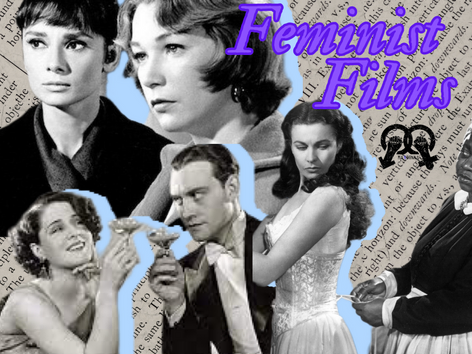This article is a special-featured read designed to provide valuable academic insights. It delves into a comprehensive analysis of the subject matter, utilising terminology that may be unfamiliar to some readers. We encourage those who wish to enhance their understanding of the concepts discussed in this article to refer to the “Gender Basics” section available on our website.

More specifically, early feminist film critics claimed that the small number of female roles (sex object, brainless bimbo, femme fatale, housewife, sacrificing mother, etc.) present in films restricted women's aspirations in real life and diverted them towards a smaller number of career options.
Molly Haskell’s From Reverence to Rape (1974), a well-known illustration of this early feminist perspective, begins by asserting that “the big lie perpetrated on Western society is the idea of women’s inferiority,” and that “the movie business is an industry dedicated for the most part to reinforcing the lie.” By the middle of the 1970s, a more clearly theoretical approach that extensively drew from psychoanalysis and another recently popular critical vocabulary, such as French poststructuralism, had emerged as a challenge to the sociological approach to feminist cinema criticism. This competing approach, which offered more complex interpretive techniques, quickly overwhelmed the sociological school of cinema criticism, but it never completely silenced it.
Psychoanalytic film theory

The power of cinematic suture
I want to note that Lacan’s theory of lack offers a compelling way to understand cinematic suture, the phenomenon of spectators being drawn into the filmic narrative so seamlessly that they forget they’re watching an illusory world, before outlining some of the ways feminist film theory has appropriated Freudian and Lacanian insights about the constitution of masculinity and femininity. Kaja Silverman makes the argument that screen images have this influence over us because they promise to close the gaping hole inside of us, or more specifically, to suture it, in The Subject of Semiotics from 1983. regained wholeness that Lacan diagnosed as one of the key elements of the human condition. The resolution of conflicts is one of the trademarks of mainstream movies. What’s more, insofar as such movies offer us conventional plot lines, they give us the satisfaction of knowing from the get-go how things are going to turn out; we may not be able to foresee every plot twist but we have a ballpark understanding of where the characters will end up. For example, when watching a romantic comedy such as Pretty Woman, we know not only that the heroine won’t die but also that, whatever the trials she undergoes during the narrative, she’ll eventually triumph. We also know that the hero of the story isn’t going to rape or beat up the heroine, that — whatever his flaws — he’ll eventually turn out to be a decent chap. And we know that no matter how much the hero and the heroine bicker, the movie will end with reconciliation and the promise of romantic fulfilment. There are popular films, particularly recent ones. Television productions that defy some of our fundamental assumptions, such as the 2006–14 television series 24. The show’s heroes were frequently killed off, shocking viewers (with the exception of Jack Bauer, of course, who had the strength to survive even his own death). This procedure was heralded as ground-breaking at the start of the series, and it has since been copied by other well-known shows like The Good Wife (2009–), Downton Abbey (2010–), Homeland (2011–), and even adolescent sensation The Vampire Diaries (2009–).
“Femininity” as a Heteropatriarchal Invention
Thus, feminist cinema theorists used Freudian-Lacanian psychoanalysis to highlight how films can draw us into their stories, even if those stories include dubious messages about gender. But perhaps more importantly, they sought to illuminate the mechanisms by which films produce gendered messages in the first place. They sought to tease out the full implications of the notion that masculinity and femininity are not biological givens — innate characteristics of men and women — but rather the outcomes of a society centred on phallic power. Feminist critics were more broadly interested in how prevailing gender and sexuality standards were internalised to the point that they are perceived as completely taken-for-granted, whereas Freud focused on the Oedipus complex as a technique of gender socialization.
References
- Molly Haskell, From Reverence to Rape: The Treatment of Women in the Movies (Chicago: University of Chicago Press, 1974),
- See Sigmund Freud, Five Lectures on Psychoanalysis, trans. James Strachey (New York: Norton, 1961).
- For a brilliant analysis of the ideology of gender complementarity, see Hilary Neroni, The Violent Woman: Femininity, Narrative, and Violence in Contemporary American Cinema (Albany, NY: SUNY Press, 2005).
- See Christopher Ryan and Cacilda Jeth á , Sex at Dawn: The Prehistoric Origins of Modern Sexuality (New York: Harper, 2011).
- The details of the female Oedipus complex are beyond the parameters of this book.
Kaushiki Ishwar is pursuing history & philosophy at Miranda house, Delhi University. They are interested in Intersectionalities and queer theory. Their works are published in Feminism in India, livewire and youth ki awaaz.





